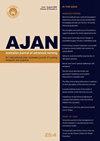当代患者评估要求是否与专业护理实践相一致?
IF 1.3
4区 医学
Q3 NURSING
引用次数: 0
摘要
目的:探讨当代患者评估的要求,以及如何与专业护理实践相结合。背景:当代患者评估要求旨在规范患者需求和风险的行为、收集和记录。目前的评估要求旨在统一适用于专家和新手护士,以确保评估过程和文件的一致性。随着时间的推移,对患者评估的要求越来越复杂,但缺乏证据表明这些要求如何影响专家护士的工作。讨论:该讨论文件反映了这些问题的各个方面,例如专家如何发展他们的实践,评估需求的要素,评估需求如何以及为什么随着时间的推移而变化。随着时间的推移,专业护士通过接触广泛的临床场景和学习经验来发展实践。专家实践的部分定义是,根据过去的经验,专家已经学会识别和预测护理需求的模式,能够快速识别患者病情的关键要素。文献确定了当前评估要求固有的一些风险,其中许多风险未得到充分认识。不成比例地关注文件合规性可以将护士的实践从评估患者需求转向评估文件的过程。在评估实践中缺乏灵活性可能会降低专家护士对患者个人需求做出反应的能力,并根据他们的需求量身定制护理。数据收集的重复和重复无意中嵌入到评估过程中,有可能影响实践效率,并增加专家护士对该过程的挫败感。评估文件的复杂性也被认为阻碍了告知临床判断的过程,并可能影响护士识别未具体包括在授权评估工具中的风险的能力。对研究、政策和实践的影响:本讨论强调专家实践的具体要素,并将其与当代评估要求进行比较。具体衡量现行考核要求对护士的时间影响还需进一步研究。需要专家护士对当前要求的价值以及哪些变化会对他们的实践和满意度产生积极影响的反馈。这将有助于完善评估要求,以确保当前的要求适合护士的实践,确保专家护理实践的效率,最大限度地提高护理满意度,并在保持实践安全的同时限制护士的职业流失。关于这个话题我们知道些什么?随着时间的推移,对患者评估的目的和过程进行了彻底的研究。有大量的知识和证据支持使用标准化的患者评估文件。专家护理实践的价值和性质在现有文献中得到了广泛的探讨。本文补充的内容:认识到当代评估要求中的意外风险,如数据收集的重复和复杂性,有可能降低护理实践的效率。承认评估要求被一些专业护士视为影响安全,负担沉重,并有可能降低护理满意度和保留率。认识到对评估文件合规性的不成比例的关注有可能将护士的优先事项从评估的目的转移到过程中。本文章由计算机程序翻译,如有差异,请以英文原文为准。
Do contemporary patient assessment requirements align with expert nursing practice?
Objective: This paper discusses contemporary patient assessment requirements and how they articulate with expert nursing practice. Background: Contemporary patient assessment requirements are intended to standardise the conduct, collection and documentation of patient needs and risks. Current assessment requirements are designed to be applied uniformly for both expert and novice nurses’ alike to ensure consistency in the process and documentation of assessment. The requirements for patient assessment have grown in complexity over time but there is a paucity of evidence that considers how those requirements impact the work of expert nurses. Discussion: This discussion paper reflects on individual aspects of these issues such as how experts develop their practice, the elements of assessment requirements, how and why assessment requirements have changed over time. Expert nurses develop practice over time that is shaped by exposure to a wide range of clinical scenarios and learning experiences. Expert practice is partly defined by an ability to quickly identify key elements of a patient’s condition based on past experiences where the expert has learnt to recognise and predict patterns of care needs. The literature identifies a number of risks inherent with current assessment requirements, many of which are poorly recognised. Disproportionate focus on documentation compliance can reframe nurses’ practice away from assessing patient needs towards the process of assessment documentation instead. A lack of flexibility in assessment practice risks reducing the expert nurses’ ability to respond to the individual needs of a patient and tailor care uniquely designed for their needs. Repetition and duplication of data collection unintentionally embedded within the assessment process, risks impacting the efficiency of practice and serves to increase expert nurses’ frustration with the process. The complexity of assessment documentation was also seen to hinder the process of informing clinical judgement and may cloud the nurse’s ability to recognise risks not specifically included in the mandated assessment tools. Implications for research, policy and practice: This discussion highlights specific elements of expert practice and compares that to contemporary assessment requirements. Further research is needed to specifically measure the time impact of current assessment requirements on nurses. Feedback from expert nurses regarding the value of current requirements and what changes would positively impact their practice and satisfaction levels is needed. This would assist in refining assessment requirements to ensure that current requirements suit nurse’s practice, ensure the efficiency of expert nursing practice, maximise nursing satisfaction, and limit loss of nurses from the profession while maintaining safety of practice. What is known about the topic? The purpose and process of patient assessment has been thoroughly investigated over time. There is a significant body of knowledge and evidence that supports the use of standardised patient assessment documents. The value and nature of expert nurse practice has been widely explored in existing literature. What this paper adds: Recognition that unintended risks in contemporary assessment requirements such as duplication and complexity of data collection has the potential to reduce the efficiency of nursing practice. Acknowledgement that assessment requirements are seen by some expert nurses as impacting safety, are burdensome and have the potential to reduce nursing satisfaction and retention. Recognition that a disproportionate focus on assessment documentation compliance has the potential to shifts nurses’ priorities away from the purpose of assessment onto the process instead.
求助全文
通过发布文献求助,成功后即可免费获取论文全文。
去求助
来源期刊
CiteScore
2.30
自引率
7.10%
发文量
27
审稿时长
>12 weeks
期刊介绍:
The Australian Journal of Advanced Nursing publishes a wide variety of original research, review articles, practice guidelines, and commentary relevant to nursing and midwifery practice, health- maternity- and aged- care delivery, public health, healthcare policy and funding, nursing and midwifery education, regulation, management, economics, ethics, and research methodology. Further, the journal publishes personal narratives that convey the art and spirit of nursing and midwifery.
As the official peer-reviewed journal of the ANMF, AJAN is dedicated to publishing and showcasing scholarly material of principal relevance to national nursing and midwifery professional, clinical, research, education, management, and policy audiences. Beyond AJAN’s primarily national focus, manuscripts with regional and international scope are also welcome where their contribution to knowledge and debate on key issues for nursing, midwifery, and healthcare more broadly are significant.

 求助内容:
求助内容: 应助结果提醒方式:
应助结果提醒方式:


